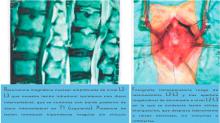Radiosurgery in acoustic neurinoma: Preliminary results at the Pacific Radiosurgery Institute
The authors present a serie of cases of acoustic neurinoma cases treated with LINAC. Actuarial control rates at 1 and 2 years were both 98% and 5% at 90%. Only 4 patients (1%) required surgery for tumor growth. Seventeen patients (4.4%) experienced facial paresis and 14 patients (3.6%) reported facial hypoesthesia. The risk of these complications is directly related to tumor volume and / or the prescribed dose at the periphery of the tumor.






